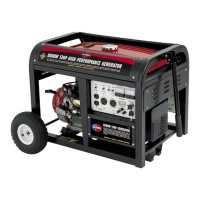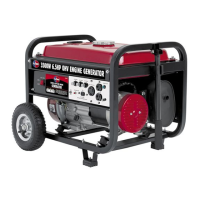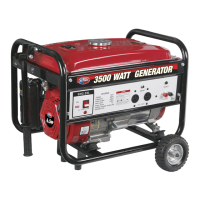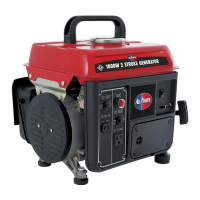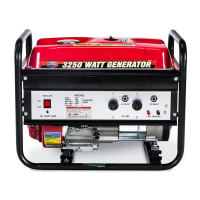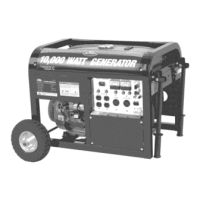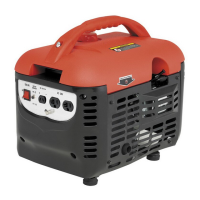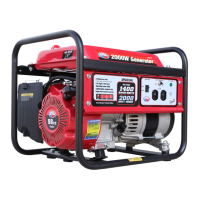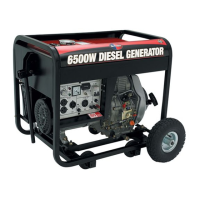IMPORTANTSAFETYINSTRUC ON(C D)
0
0
ElectricalSafety
• Grounded tools must be plugged into an outlet propedy
ins_lied and grounded in accordance with a_l codes and
ordinan_& Never remove the grounding prong or modify
the plug in any way: Do not use any adapter plugs.
Grounding provides a _ow-resis_nce path to carry ele_ricity away from
the user inthe event of an eJed:rica_ malfunction.
Double insulated t:oo[s are equipped with a polarized p_ug where one
not: change the plug in any way. Double insulation eliminates the need
for the three-wire grounded power cord and grounded power suppiy
system.
• Avoid body contact with grounded surfaces such, as pipes, radiators,
ranges, and refrigerators. There is an increased risk of electric shock if
your body is grounded_
• Do not: expo_ generator to rain or wet conditions. Water entering a
generator wilt increase the risk of electric shock.
• Do not abuse the power cord. Keep power cords away from heat, oi!,
sharp edges or moving parts. Repia_ damaged power cords
immediately Damaged power cords increase the risk of eiectric shock.
and reduce the dsk of electric shock.
• All connections and conduits from the generator to the load must only be
installed by trained and li_nsed electrician& and in compliance with aH
relevant local, state, and federa_ electrical codes and standards, and
other regulations where appli_b_e.
• The generator must be earth-grounded for fixed installations in
accordance with all relevant electric! codes and standards before
operation
• Do not attempt to connect or disconnect load _nnecttons while standing
in water, or on wet or soggy ground.
• Do not touch e_ectdcaily energized parts of the generator and
interconnecting cables or conductors with any _rt of the body, or with
any non-insulated conductive object.
9
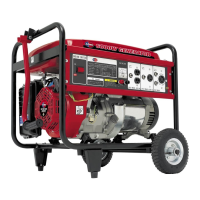
